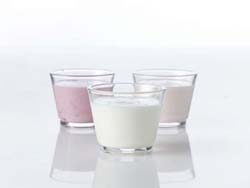Making yogurt even healthier
Histamine is a bioorganic amine which when ingested has undesirable effects such as dilation of arteries, a decrease in heart rate and constriction of the bronchioles. Lactic acid bacteria (LAB) play an important role in its production from the amino acid histidine in protein rich-foods. Unfortunately, the food commonly associated with a healthy diet, yoghurt, is a candidate for this unwelcome reaction.Produced from milk, it is a high-protein food and LAB are utilised to change lactose into lactic acid. The acid then helps to preserve the product and thicken it. Project partners at Chr. Hansen A/S in Denmark, a company renowned for industrial production of healthy food using natural ingredients, manufactured yogurt using various culture combinations. Culture bacteria under trial included Lactobacillus bulgaricus, a very commonly used bacterium and other fermenters such as Streptococcus thermophilus. The team were also interested in whether the histamine production occurred during the production process or later when stored in refrigerator conditions. Samples were taken at day one of fermentation and then during storage at 4°C on days 20 and 50. These were then subjected to histamine assay using the technique of high performance liquid chromatography (HPLC). Histamine was found in yogurt samples produced by L. bulgaricus together with histamine positive strains of S. thermophilus. However, when histamine negative strains of S. thermophilus were used, no histamine was detected. It is most likely that L. bulgaricus produces histidine in the first place. The streptococci then produce the histamine from the precursor. However, if a histamine positive S. thermophilus strain is used, restriction of the amino acid histidine is a strategy that is likely to curb the formation of histamine. The results of this investigation indicate that histamine negative bacterial strains can be used without the undesirable production of the biogenic amine. All commercial yoghurt cultures supplied by Chr. Hansen are indeed histamine negative. Also important for consumers is that most of the histamine was found to be produced during fermentation itself and not during the storage phase. Yogurt is a natural food that has many acclaimed health effects. Data from this trial can help to ensure its beneficial effects can continue to be enjoyed.







